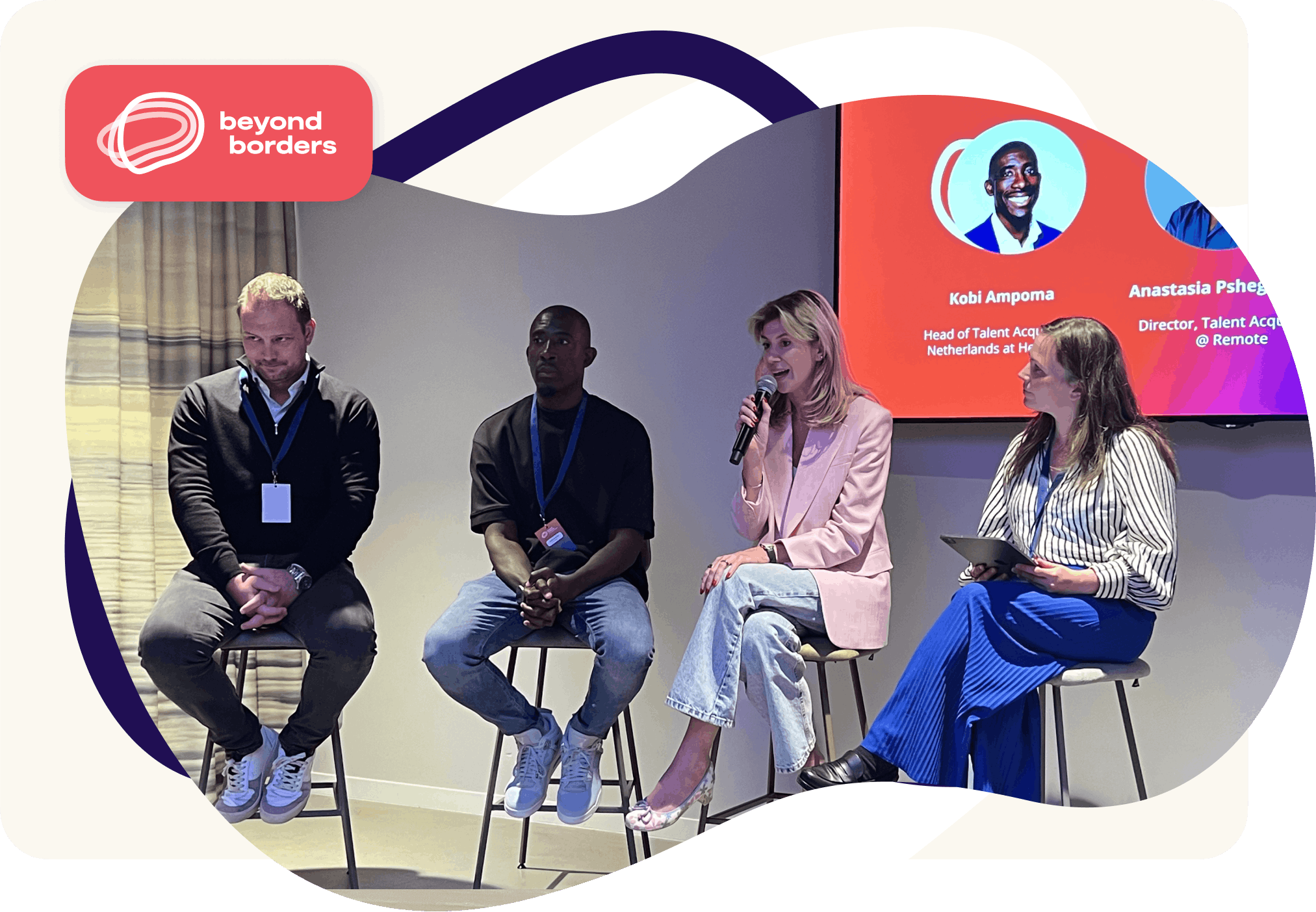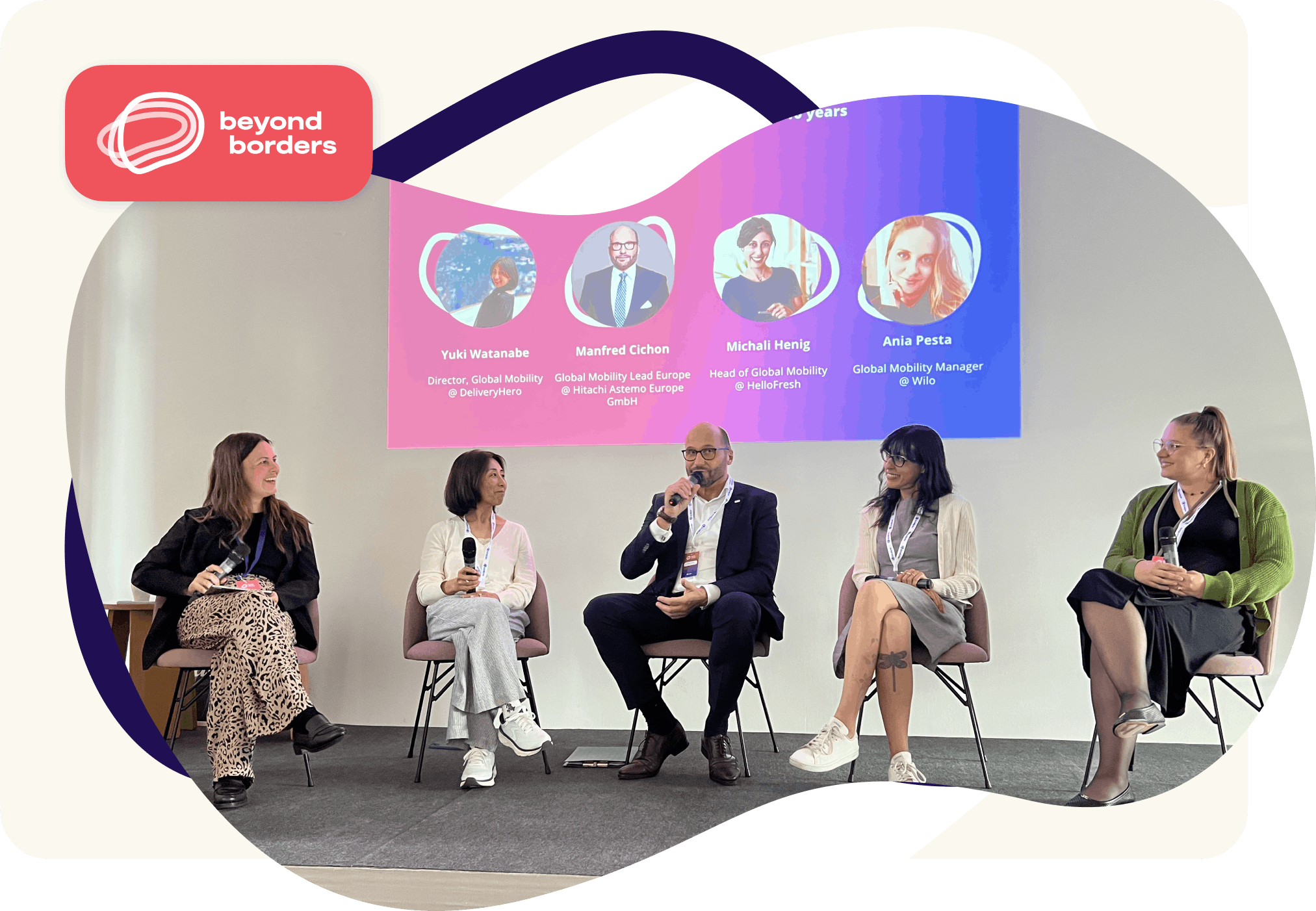Global mobility was once primarily a support function - facilitating hiring, enabling talent moves, and enhancing employee experience. Today, it is essential to business strategy, playing a critical role in workforce planning, global growth, and competitive positioning.
At this year's edition of Beyond Borders in Amsterdam, industry experts sat down and discussed how it should be used to provide businesses a strategic edge.
Floor van der Meer, Sr. International Global Mobility Advisor at ING described how mobility now “splits” between core operations and strategic talent planning. “We have a split between the operations and CEO. We bring HR directors in early to see what’s possible and what’s not.” In practice, this means mobility teams are invited into deal reviews, core to market entry discussions, and enablers for talent pipelines - rather than being retrofitted after decisions are made.
Narendra Parthasarathy, Global Mobility Leader at Cognizant, reinforced this, stating that when a company wins new deals or considers expansion, mobility becomes a key input. He also stressed Mergers & Acquisitions (M&A) is now another domain where global mobility must be plugged in. The message: strategic mobility planning can’t be an afterthought.
Hans Hoogendijk, International Mobility Manager, at BAM Construction, brought a compelling case from the blue-collar perspective, calling out persistent talent-gaps in trades like carpentry and foremanship. He highlighted the complexity of sourcing, relocating, and retaining workers: navigating challenges like housing, language barriers, safety standards, and varying local employment conditions. When mobility teams bridge those gaps proactively, they directly contribute to critical business outcomes, such as project delivery, workforce continuity, and operational efficiency. In this context, compliance is not just a regulatory necessity but a foundation that enables sustainable, risk-managed growth across borders.
AI: from awareness to adoption
AI-usage is advancing fast in mobility operations, but responsible adoption requires caution and judgment. Narendra observed that in the last 2-3 years, AI has exploded in interest. He said mobility functions are at stage one: awareness, experimenting, and laying the groundwork for real adoption over the next 4-5 years. But, as he put it, “complex tasks will go away,” not the need for human oversight.
Hans offered a counterpoint: “The heavy lifting will be taken over by AI but people still need to talk to human beings to express their anxiety and frustrations.”
He shared an anecdote: someone asked ChatGPT for mental health help during a personal crisis, but the human element remained irreplaceable. This captures a critical balance: automation can speed operations, but empathy, nuance, and trust can’t be automated easily.
Floor added a practical reality check. Using tools like Co-Pilot or ChatGPT, expats might pull generic cost-of-living data, but mobility teams must assess local context, adjust for nuance, and interpret results. AI is an important assistant, but mobility professionals must bring judgment, validation, and trust to the final output.
This cautious optimism aligns with recent benchmark data. According to KPMG’s 2024 Global Mobility Benchmarking Survey, 51 percent of organizations plan to integrate AI in the short or long term, especially in automating administrative tasks. At the same time, 76% already use workflow and data management tools, underlining that the toolkit is expanding. Generative AI in mobility could automate routine queries, risk screening, and insights, but only if teams maintain a human in the loop.
Emerging talent hubs & worker expectations
As the cost of talent and relocations rises in traditional hubs, many mobility and TA leaders are eyeing more affordable or flexible markets. In our second panel at Beyond Borders Amsterdam, Kobi Ampoma, Head of Talent Acquisition at Heineken, pointed to hubs like Portugal, Spain, and India, where cost, lifestyle, and opportunity align. He said: “Other hubs are coming up because they are more affordable, such as Portugal, Barcelona, India.”
Anastasia Pshegodskaya, Director, Talent Acquisition at Remote and Bryan Peereboom, Founder of the National Academy of AI, echoed similar views: rising cities like Stockholm, combined with remote/hybrid flexibility, are changing the calculus. Bryan remarked on how language barriers may fade with real-time translation: “Do you even need to move then?”
But relocation isn’t just about the destination, workers’ expectations are changing. Floor observed that younger graduates sometimes prefer autonomy over handholding, whereas senior hires with families still want concierge-like relocation support. Mobility teams need to calibrate service levels accordingly, whilst also maintaining consistency around these approaches.
Mercer’s 2025 Strategic Mobility Management Survey backs this: high costs remain a key obstacle to relocation, pushing companies to explore alternatives like shorter-term assignments or local hiring abroad. Meanwhile, Mercer’s Global Talent Trends report emphasizes that organizations must pursue a “digital-first” culture while ensuring productivity remains human-centric.
Key data & trends marking these shifts
- AI adoption pressure: According to KPMG’s 2024 Global Mobility Benchmarking Survey, only ~5% of GM teams are using AI in their regular processes, but 51% plan to integrate AI soon, especially automation of admin tasks.
- Short-term moves growing: Mercer’s 2025 Talent Mobility Outlook suggests short-term assignments are likely to increase (34% of respondents) while long-term moves remain stable or modestly decline.
- Global GDP & AI: PwC’s “Value in Motion” report estimates that AI could boost global GDP by up to 15 percentage points by 2035 if deployed responsibly.
- Housing crisis in the Netherlands: The Netherlands faces strong housing affordability issues driven by supply shortages and high rent inflation, impacting mobility attraction.
What global mobility & talent acquisition teams should do to stay ahead
- Start with low-risk administrative automation; build skills in interpreting AI output; ensure compliance.
- Gear mobility planning toward deal wins, market entries, M&A etc. Involve GM leaders in talent conversations from the start.
- Provide support for relocation beyond paperwork: housing, schooling, family, clarity. This is more than a “nice to have.”
- Track rising talent markets (Spain, Portugal, parts of Eastern Europe) to uncover new regions with strong and scalable talent pools.
- Upskill GM teams in data, AI literacy, regulatory knowledge; cultivate “human-centric thinking” so technology complements, not replaces, empathy.
The message from Beyond Borders Amsterdam is clear: global mobility isn’t just about moving people anymore, in practice it’s a strategic lever for growth, competitive differentiation, and enabling the future of work. AI and emerging hubs are shifting the rules, but the human dimension will always matter. The GM and TA functions that combine technology, strategic alignment, and deep care for the employee experience are the ones who will lead in 2026 and beyond.



